Why Use Extended Reach Drilling Technique in Unconventional Reservoirs
Extended Reach Drilling (ERD) has emerged as a transformative technique in the oil and gas industry, particularly for unlocking the potential of unconventional reservoirs. These reservoirs, which include shale formations, tight sands, and coalbed methane, often present significant challenges that traditional vertical drilling methods cannot effectively overcome. Extended Reach Drilling provides a solution by enabling operators to access and efficiently exploit these resources.
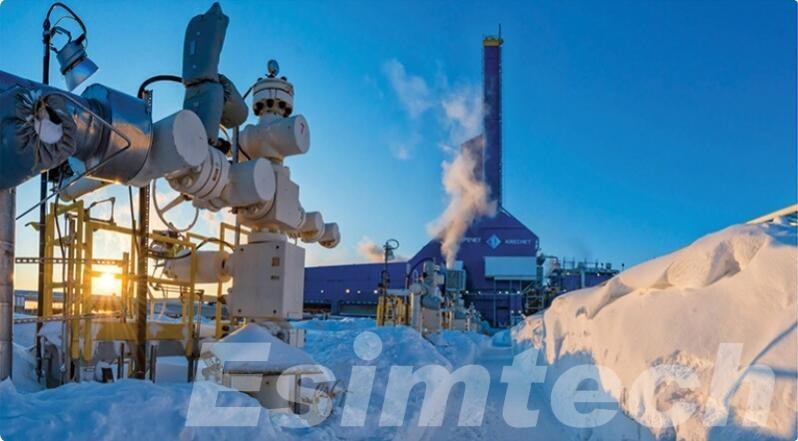
What is Extended Reach Drilling
ERD drilling involves drilling wells that extend horizontally for considerable distances from a single vertical wellbore. This approach allows operators to reach far beyond the vertical limit of the drilling rig, tapping into hydrocarbon-rich zones that would otherwise be inaccessible. The horizontal sections of ERD wells can extend several kilometers, significantly increasing the contact area with the reservoir.
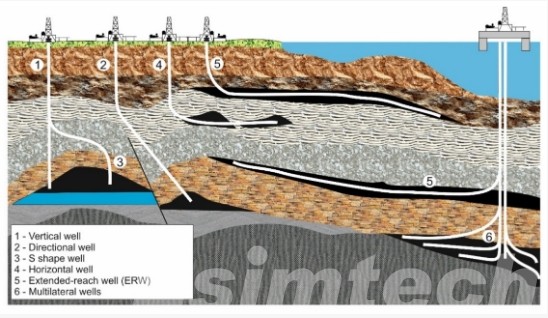
Advantages of Extended Reach Drilling in Unconventional Reservoirs
1. Enhanced Reservoir Exposure
Increased Wellbore Contact: ERD allows for extensive horizontal drilling, which significantly increases the contact area with the reservoir. This is particularly beneficial in unconventional reservoirs where hydrocarbons are dispersed in low-permeability rock formations. By maximizing reservoir exposure, ERD drilling enhances the flow of oil and gas into the wellbore, leading to improved recovery rates.
2. Reduced Environmental Footprint
Minimized Surface Disturbance: One of the key environmental benefits of ERD is its ability to access large subsurface areas from a single surface location. This reduces the number of drilling sites required, leading to a smaller surface footprint. Consequently, there is less disruption to the environment, including reduced land use, lower impact on ecosystems, and decreased need for infrastructure such as roads and pipelines.
3. Cost Efficiency
Economies of Scale: Despite the higher initial costs associated with ERD, the technique can be more cost-effective in the long term. By drilling multiple horizontal wells from a single pad, operators can reduce the overall number of drilling sites and associated surface infrastructure. This consolidation leads to significant savings in site preparation, transportation, and logistics.
Operational Efficiency: ERD allows for simultaneous drilling and production operations, which can streamline workflows and reduce downtime. The ability to manage multiple wells from a single location also enhances operational efficiency and reduces overall project timelines.
4. Improved Production Rates
Access to Remote Reserves: ERD enables operators to reach hydrocarbon reserves that are located far from the vertical wellbore, which would be inaccessible using conventional drilling techniques. This capability is particularly valuable in unconventional reservoirs where the distribution of resources is often uneven. By accessing these remote reserves, ERD can lead to higher production rates and more efficient resource extraction.
5. Flexibility and Adaptability
Versatility in Well Placement: ERD provides greater flexibility in well placement, allowing operators to strategically target specific areas of the reservoir that are most likely to yield high production. This adaptability is particularly important in unconventional reservoirs, where geological heterogeneity can significantly impact well performance.
Risk Mitigation: By reducing the number of drilling sites and surface infrastructure, ERD can mitigate risks associated with land access, regulatory compliance, and environmental impact. This risk reduction is beneficial for both operators and stakeholders, leading to more sustainable and responsible resource development.
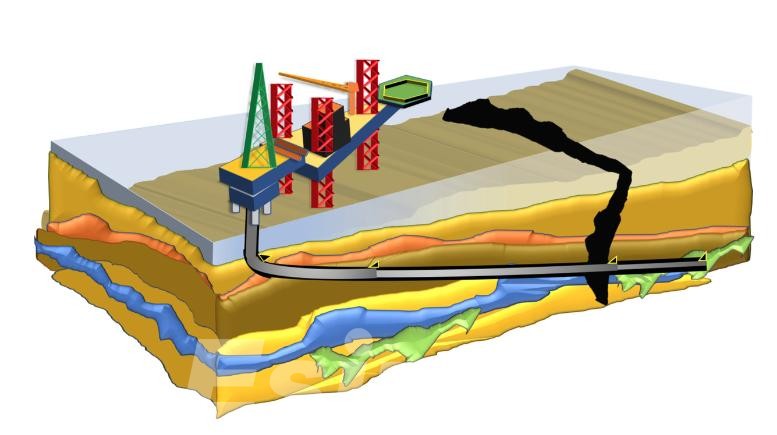
Challenges and Solutions of Extended Reach Drilling in Unconventional Reservoirs
| Challenges | Solutions |
| Torque and Drag | 1. Use of lubricants to reduce friction 2. Optimized drilling practices 3. Advanced downhole tools and equipment 4. Real-time monitoring to adjust drilling parameters |
| Hole Cleaning | 1. High-performance drilling fluids to improve cuttings transport 2. Robust circulation systems 3. Regular monitoring and adjustments to maintain efficient hole cleaning |
| Pressure Control | 1. Managed Pressure Drilling (MPD) techniques 2. Continuous monitoring of downhole pressures 3. Use of specialized equipment to maintain wellbore stability |
| Geomechanical Stability | 1. Geomechanical modeling and stress analysis 2. Wellbore design to withstand stresses associated with long horizontal sections 3. Use of appropriate casing and cementing practices |
| Extended Wellbore Length | 1. Enhanced directional drilling tools such as rotary steerable systems (RSS) 2. Advanced downhole motors for precise wellbore placement 3. Real-time data acquisition for accurate trajectory control |
| Complex Wellbore Trajectory | 1. Detailed planning of wellbore trajectory in ERD drilling 2. Use of 3D seismic data for accurate subsurface mapping 3. Integration of advanced software for well path optimization |
| Formation Damage | 1. Use of low-invasion drilling fluids to minimize formation damage 2. Controlled drilling practices to avoid excessive pressure and mechanical damage |
| High Costs | 1. Economies of scale by drilling multiple wells from a single pad 2. Efficient project management and logistics 3. Investment in technology to improve overall operational efficiency |
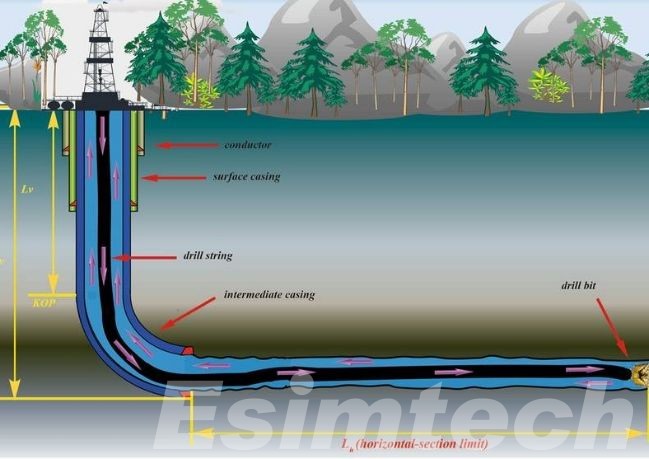
Technological Innovations Enabling Extended Reach Drilling in Unconventional Reservoirs
1. Advanced Rotary Steerable Systems (RSS)
Description: advanced RSS technology allows for precise directional control of the drill bit, enabling complex well trajectories and longer horizontal sections.
Benefits
- Improved wellbore placement accuracy
- Enhanced directional control, minimizing deviations
- Increased rate of penetration (ROP) by maintaining optimal bit orientation
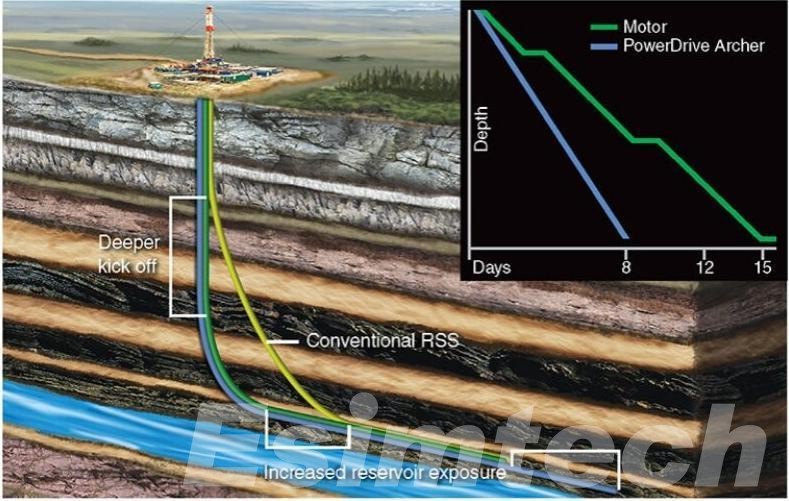
2. High-Performance Drilling Fluids
Description: Specialized drilling fluids are engineered to stabilize wellbores, reduce friction, and enhance cuttings transport in long horizontal wells.
Benefits
- Improved wellbore stability in various geological formations
- Reduced torque and drag, facilitating longer reach
- Efficient cuttings removal, preventing blockages and non-productive time (NPT)
3. Real-Time Data Acquisition and Monitoring
Description: Advanced sensors and telemetry systems provide real-time data on downhole conditions, allowing for immediate adjustments to drilling parameters.
Benefits
- Enhanced decision-making with real-time data
- Improved well control and risk mitigation
- Optimization of drilling performance and reduced downtime
4. Managed Pressure Drilling (MPD)
Description: Managed pressure drilling techniques involve precise control of the wellbore pressure profile to prevent formation damage and manage complex pressure regimes.
Benefits
- Enhanced well control in challenging formations
- Minimized risk of blowouts and lost circulation
- Ability to drill through narrow pressure windows safely
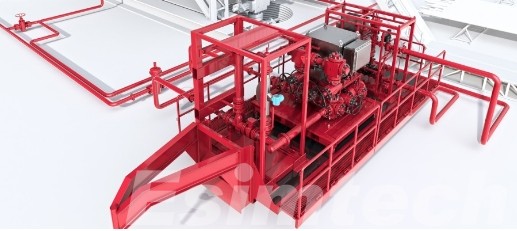
5. Advanced Geomechanical Modeling
Description: Geomechanical modeling tools simulate subsurface stress conditions to optimize wellbore design and prevent instability.
Benefits
- Improved wellbore stability and reduced risk of collapse
- Optimized drilling and completion strategies
- Enhanced understanding of reservoir behavior and stress distribution
6. High-Strength Drill Pipes and Connections
Description: Innovations in drill pipe materials and connection designs increase the mechanical strength and flexibility of the drill string.
Benefits
- Increased load-bearing capacity for extended reach
- Reduced risk of pipe failure in challenging conditions
- Enhanced durability and operational efficiency
7. Enhanced Completion Technologies
Description: Advanced well completion techniques, including multi-stage hydraulic fracturing and intelligent completion systems, optimize well performance.
Benefits
- Improved reservoir contact and hydrocarbon flow
- Customizable completion designs to suit specific reservoir conditions
- Real-time monitoring and control of production parameters
8. Downhole Motors and Turbodrills
Description: High-performance downhole motors and turbodrills provide the power and control needed for extended-reach drilling operations.
Benefits
- Increased rate of penetration in hard formations
- Enhanced directional control and drilling efficiency
- Reduced mechanical stress on the drill string
9. Cutting-Edge Seismic Imaging
Description: Advanced seismic imaging techniques provide detailed subsurface maps, aiding in the precise planning of well trajectories.
Benefits
- Accurate identification of target zones and geological hazards
- Improved wellbore placement and reservoir contact
- Enhanced understanding of reservoir structure and properties
10. Automated Drilling Systems
Description: Automation technologies streamline drilling operations, reducing human error and increasing efficiency.
Benefits
- Increased drilling accuracy and consistency
- Reduced operational costs and improved safety
- Enhanced ability to execute complex drilling programs
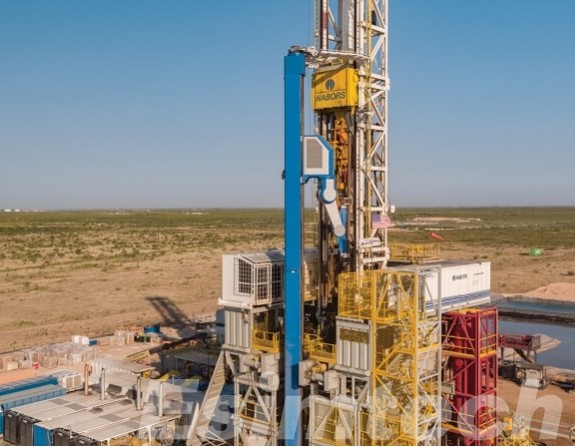
Key Simulations Used in Extended Reach Drilling for Unconventional Reservoirs
1. Wellbore Stability Simulation
Purpose: To predict and manage wellbore stability issues during drilling operations.
- Geomechanical Modeling: Analyzes the stress distribution around the wellbore to predict potential collapse or fracturing.
- Rock Mechanics Analysis: Evaluate the mechanical properties of the rock to design appropriate drilling fluids and wellbore support structures.
2. Torque and Drag Simulation
Purpose: To estimate and manage the mechanical forces acting on the drill string.
Torque and Drag Analysis: Calculates the frictional forces along the wellbore to optimize drilling parameters and prevent stuck pipe incidents.
BHA (Bottom Hole Assembly) Configuration: Simulates different BHA designs to minimize torque and drag while ensuring directional control.
3. Hydraulic Simulation
Purpose: To optimize the hydraulic parameters for efficient cutting transport and pressure management.
- Mud Flow Simulation: Models the flow of drilling mud through the wellbore to ensure effective cuttings transport and cooling of the drill bit.
- Pressure Drop Analysis: Calculates the pressure losses in the wellbore to maintain well control and prevent formation damage.
4. Directional Drilling Simulation
Purpose: To plan and execute the precise placement of the wellbore trajectory.
- Trajectory Planning: Designs the optimal well path to maximize reservoir contact while avoiding geological hazards.
- Anti-Collision Simulation: Ensures the well path avoids collisions with existing wells and other subsurface structures.
5. Reservoir Simulation
Purpose: To model the behavior of the reservoir and optimize hydrocarbon recovery.
- Production Forecasting: Predicts the production rates based on reservoir properties and well configuration.
- Enhanced Recovery Techniques: Simulates the impact of various completion and stimulation techniques, such as hydraulic fracturing, on well performance.
6. Cuttings Transport Simulation
Purpose: To ensure efficient removal of cuttings from the wellbore to the surface.
- Transport Modeling: Analyzes the behavior of cuttings in the drilling fluid to optimize fluid properties and flow rates.
- Hole Cleaning Efficiency: Simulates the effectiveness of different drilling parameters in maintaining a clean wellbore.
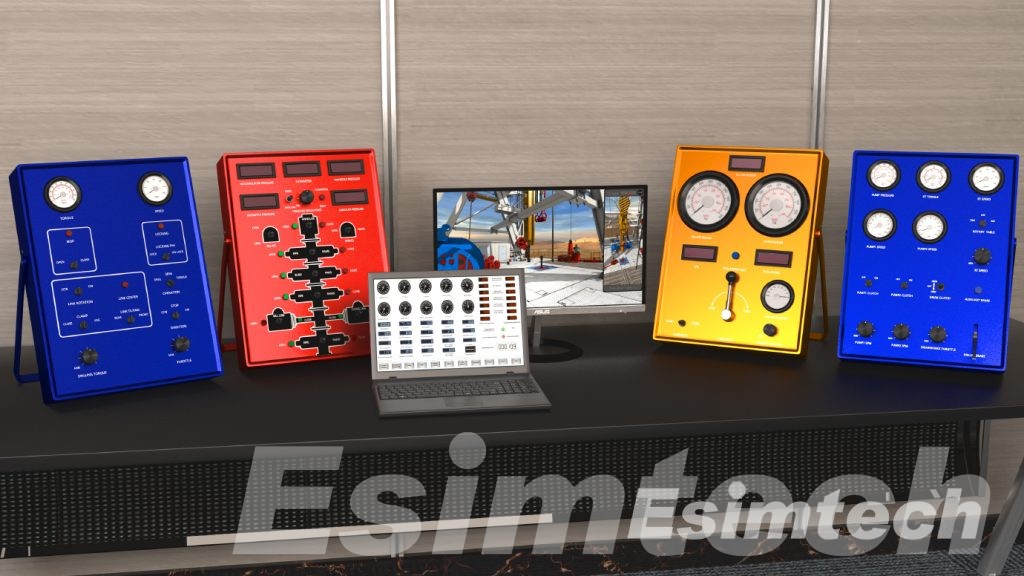
7. Temperature Simulation
Purpose: To predict temperature variations in the wellbore and their impact on drilling operations.
- Thermal Analysis: Models the temperature profile along the wellbore to manage thermal expansion and contraction of the drill string.
- Heat Transfer Simulation: Analyzes the heat exchange between the drilling fluid and the formation to optimize fluid properties.
8. Formation Pressure Simulation
Purpose: To predict and manage formation pressures during drilling operations.
- Pore Pressure Prediction: Estimates the pore pressure distribution in the formation to prevent blowouts and formation damage.
- Fracture Gradient Analysis: Determines the fracture pressure of the formation to design appropriate drilling fluid densities.
9. Completion Simulation
Purpose: To design and optimize well completion strategies for maximum production efficiency.
- Multistage Fracturing Design: Simulates the placement and impact of hydraulic fractures along the horizontal section of the wellbore.
- Perforation Modeling: Analyzes the optimal placement of perforation clusters to enhance fluid flow into the wellbore.
Conclusion
Extended Reach Drilling has revolutionized the development of unconventional reservoirs, offering a pathway to tap into resources that were previously deemed uneconomical or technically challenging. With continuous technological advancements in ERD drilling, the technique will continue to play a pivotal role in meeting the global energy demand while minimizing environmental impact and operational costs.
Simulations are indispensable tools in the planning and execution of Extended Reach Drilling operations in unconventional reservoirs. These simulations help engineers and geologists to understand the subsurface conditions, predict drilling outcomes, and mitigate potential risks.

